11 Interesting Facts About Mars You Never Knew (2024 Updates)
Last Updated on
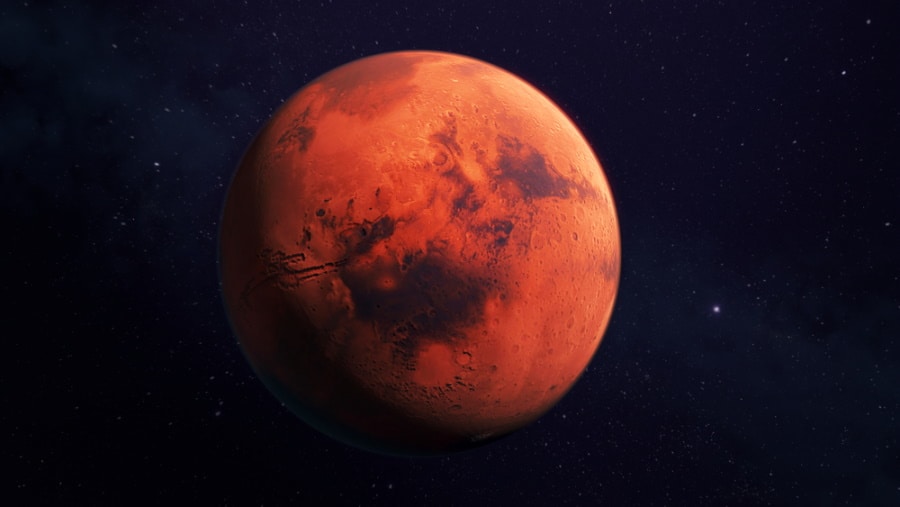
Recently, Mars has been one of the most talked-about planets in our solar system, and for many reasons. Whether it’s space expeditions or alternative inhabitation, millions of dollars have gone towards exploring the planet.
So, in this post, we will go through some of the fascinating facts about Mars discovered in the recent few decades. What makes it unique, and why are scientists keen on finding life on Mars? Find out the answers in this post.

Top 11 Facts About Mars That You Should Know
Besides being Earth’s neighbor, Mars has several features that make it similar to the Earth. Perhaps, it’s one of the reasons why space researchers are so keen on exploring the planet. Then, of course, it’s the nearest planet that we can travel to. So, it makes it more convenient to conduct research and find new facts.
Keep reading to find out some interesting facts about Mars, our neighbor planet.
1. Mars Has the Tallest Mountain in Our Solar System
Mars is home to a shield volcano known as Olympus Mons. It’s a mountain 21 kilometers high with a 600-kilometer diameter.
Interestingly, the signs of lava flow from this volcano are pretty recent. Therefore, scientists are compelled to believe that it may still be an active volcano. Who knows what new scientific elements might be lurking on the planet’s surface.

2. Half of the Space Missions to Mars Have Been successful
While most countries seem to jump into Mars missions, not every mission has been a successful one. However, the success rate is quite decent, considering that the first mission to Mars was sent back in October 1960.
Out of nearly 50 space missions to Mars, nearly 28 have been successful. Others have been partially successful, while some of them failed. Moreover, many Mars missions from countries like the US, Russia, and India are operational. These missions include both orbiters and rovers.
3. Mars Has the Biggest Dust Clouds in the Solar System
Dust storms may be troubling for us here on Earth. However, it’s an everyday affair on Mars. One dust storm involving the Mariner 9 is still considered the longest-lasting and the thickest dust cloud observed on Mars.
Interestingly, dust clouds on Mars have more of a permanent nature. Generally, they can last for several months, and some of them cover the entire planet. Therefore, Mars has extreme seasons. The extremity in seasons also occurs due to the elliptical shape of the planet as compared to the elongated shape of the Sun.
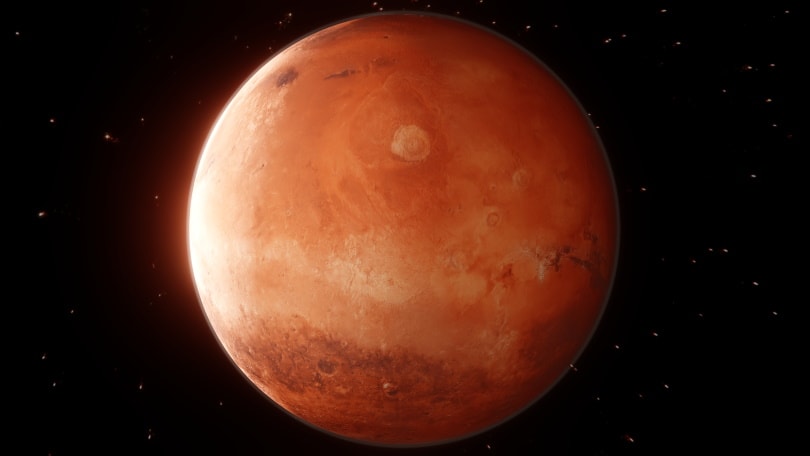
4. The Sun Appears to be Half the Size as Compared to the Earth
If you were on Mars and willing to watch a sunset, the Sun would be much smaller than you see it here on Earth.
The Southern Hemisphere of Mars is closest to the Sun, which is also the hottest place. Likewise, the Northern Hemisphere bears cold winters. Since the rovers on Mars capture the sun from a relatively much longer distance than the Earth, it appears much smaller on Mars.
5. Pieces of Mars Have Rained on Earth
Over the years, several pieces of Mars have fallen on Earth. Scientists have found traces of particles from the Martian atmosphere that ejected from Mars during orbit.
As these particles crashed on Earth, the scientists were able to figure out the composition of the planet’s surface even before the first space mission to Mars was initiated.
The most significant known piece of Mars to land on Earth weighs around 32 pounds with dimensions of 9” x 10” x 6.5”.

6. There Is Liquid Water on Mars
Perhaps one of the significant discoveries about Mars is its potential to hold liquid water. Even though Mars has held solid water (ice) for billions of years, the first signs of trickling water were observed on craters and cliffs through satellite images.
Scientists estimated this water to be salty since it didn’t freeze or vaporize. Nearly all water on Mars exists in the form of ice, while some of it exists in the atmosphere in the vapor form.
7. Mars May Have a Ring in the Future
Rings have been a fascinating sight when you watch any planet, but Mars doesn’t have one right now. However, space experts believe that in the next 20–40 million years, the largest Martian moon, Phobos, will explode due to the planet’s gravitational force.
Ultimately, the explosion would lead to a ring around the planet that could potentially last for the next 100 million years. Interestingly, research on the Deimos, the second Martian moon, led the researchers to believe that Mars once had rings.
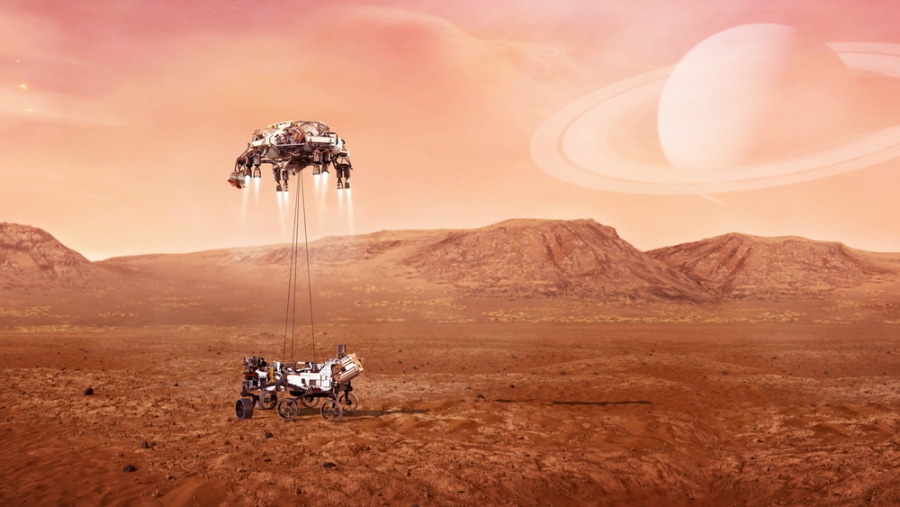
8. There Are Blue Sunsets on Mars
A sunset on Mars would be a sight worth watching. During the daytime, Martian skies are pinkish-red. As the sun sets, the sky turns blue. This is the exact opposite of the Earth.
Scientists explain the blue skies on Mars, saying that the highly dusty atmosphere and regular dust storms are the cause of blue skies during the sunset. The dust particles tend to disperse the light spectrum towards the bluish region because of a shorter wavelength.
9. There Are Two Martian Moons
Mars has two moons, and both are oddly shaped. A hypothesis about Martian moons suggests that these moons were formed due to a significant impact on Mars. Later, the resulting debris caused the formation of the moons.
Phobos and Deimos are the two moons of Mars. They are considered one of the most miniature natural satellites in our solar system.
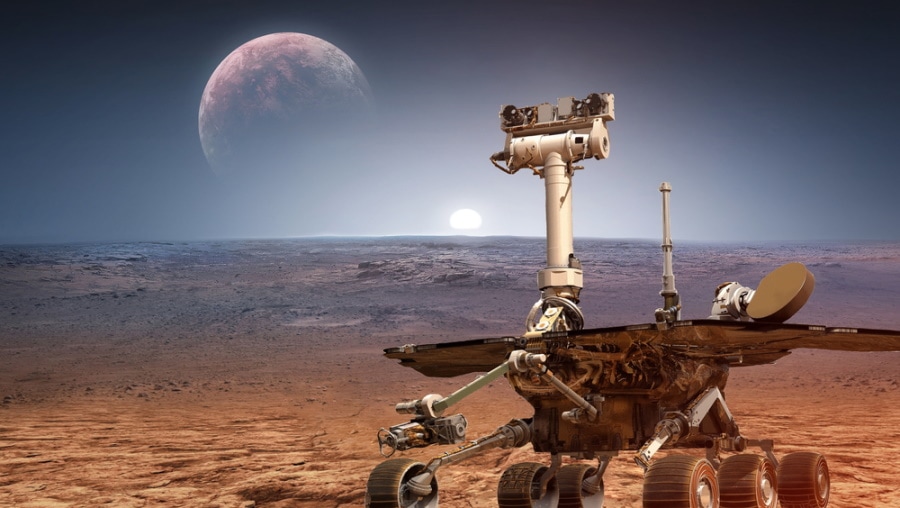
10. Mars Is Less Dense than the Earth
Mars is approximately 100 times less dense than the Earth. This means that its gravitational force isn’t as strong. So, you will feel much lighter on Mars. Research suggests that the Earth’s gravity is three times stronger than that of Mars.Therefore, if you jump with the same force on Mars, you will reach three times higher than that on the Earth’s surface.
11. The Unusual Orbit System of Mars
Mars has a much longer route to travel as compared to the Earth. Therefore, 1 year on Mars is equal to 2 years on Earth.
Moreover, Martian orbiting activity can be influenced by other planets. This is mainly because Jupiter is next to Mars and has a considerably larger mass, which tends to tinker with Mars’ orbit. Moreover, the Earth and Mars don’t follow the same orbital plane. There is a difference of a few degrees in both orbital planes.
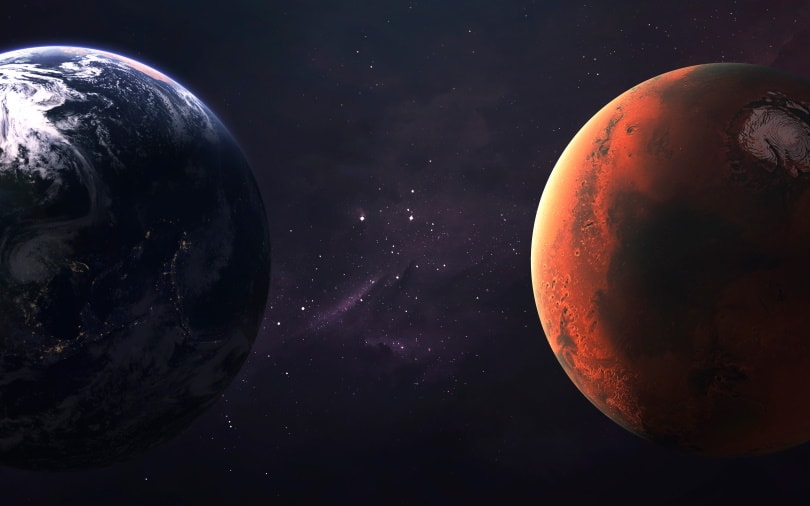

Conclusion
Mars is one of the most exciting entities in our solar system thanks to its versatile atmosphere. It invites intense research due to its reachability from Earth, and scientists are keen on exploring the planet to find viable living conditions. As a result, many people believe humans could once inhabit this unique planet in the future.
Featured Image Credit: joshimerbin, Shutterstock
Table of Contents
- Top 11 Facts About Mars That You Should Know
- 1. Mars Has the Tallest Mountain in Our Solar System
- 2. Half of the Space Missions to Mars Have Been successful
- 3. Mars Has the Biggest Dust Clouds in the Solar System
- 4. The Sun Appears to be Half the Size as Compared to the Earth
- 5. Pieces of Mars Have Rained on Earth
- 6. There Is Liquid Water on Mars
- 7. Mars May Have a Ring in the Future
- 8. There Are Blue Sunsets on Mars
- 9. There Are Two Martian Moons
- 10. Mars Is Less Dense than the Earth
- 11. The Unusual Orbit System of Mars
- Conclusion
About the Author Jeff Weishaupt
Jeff is a tech professional by day, writer, and amateur photographer by night. He's had the privilege of leading software teams for startups to the Fortune 100 over the past two decades. He currently works in the data privacy space. Jeff's amateur photography interests started in 2008 when he got his first DSLR camera, the Canon Rebel. Since then, he's taken tens of thousands of photos. His favorite handheld camera these days is his Google Pixel 6 XL. He loves taking photos of nature and his kids. In 2016, he bought his first drone, the Mavic Pro. Taking photos from the air is an amazing perspective, and he loves to take his drone while traveling.
Related Articles:
15 Crucial Facts About Ultraviolet Rays & the Sun
What Constellation Is Spica In? The Interesting Answer!
10 Interesting Leo Constellation Facts, Myths, and FAQs
15 Interesting Pegasus Constellation Facts, Myths, and FAQs
6 Interesting Sagittarius Constellation Facts, Myths, and FAQs in 2024!
What Are Constellations? Where Did They Come From?
8 Interesting Libra Constellation Facts, Myths, and FAQs
What Is Infrared Radiation? Science-Based Facts & FAQ
